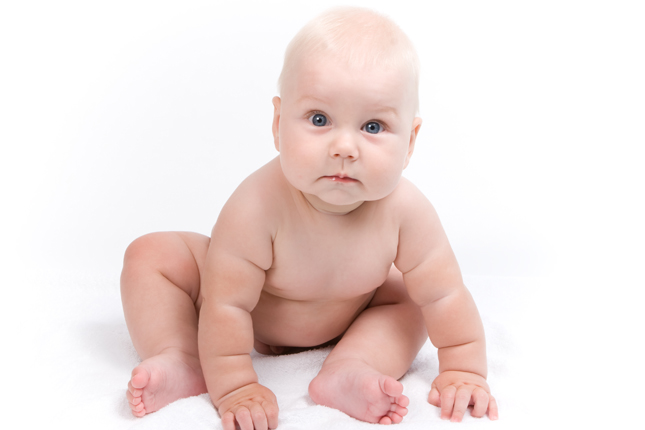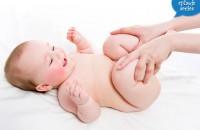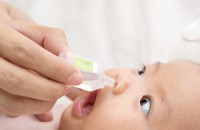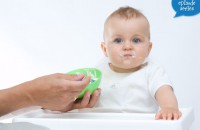Parent Savers
Cloth Diapers: Getting Started
Please be advised, this transcription was performed from a company independent of New Mommy Media, LLC. As such, translation was required which may alter the accuracy of the transcription.
Heather McNamara: Did you know that it costs up to 3000 dollars for a lifetime of disposable diapers which will take hundreds of years to decompose in landfills? Disposable diapers also contain harmful chemicals that can affect your baby. Are there other options? How does one cloth diaper? I’m Heather McNamara, Executive Director of The Real Diaper Association, here to show you how cloth diapering has changed over the years and to break down the confusing cloth-diapering lingo. This is Parent Savers, Episode 26.
[Theme Song/Intro]
KC Wilt: Welcome to Parent Savers broadcasting from the Birth Education Center of San Diego. I am your host, KC Wilt. You can now download our free App. Check it out on your smart phone or Tablet. We are so excited to announce the Parent Savers Club. This is an exclusive membership club available to all our loyal listeners. It gives you access to all the archived episodes, written transcripts of the show, a behind-the-scenes look at the conversations that take place after each interview is over, plus a special monthly newsletter with special give-aways, discounts and so much more. You can access all this great information through the web or through the new Parent Savers App. So for more information, visit https://www.parentsavers.com and click on the members’ link at the top of the page. Also, we want you to be part of the show. Did you know you can email one of our experts directly and ask parenting questions? Or, if you have a question in an episode that we didn’t answer, send it in. We have so many great and knowledgeable experts partnering with us to get your questions answered. Email or you can call our hotline and we’ll get them answered.
So, I am a new parent myself. My son Carson is 22 months old and I am joined by four new parents here in the studio.
Scott Killian: Hi, I am Scott Killian, a certified financial planner with The Family Firm. I have one boy and he is almost three.
KC Wilt: Do you cloth diapers, since we are talking about this little topic?
Scott Killian: I do cloth diaper.
Malia Gacioch: My name is Malia Gacioch, I’m 34. Shhh…, don’t tell anybody that…. I work in the Biotech Industry; I do work full time so I work outside the home. I have two boys, Jack, Max. Jack is two and a half and Max is seven months and we have cloth diapered both boys. Max from birth and Jack from three months.
Kate Hunter: I am Kate Hunter. I am 36 years old. I work in Regulatory Affairs for a Medical Device company. I have two children, a three-and-a-half-year-old girl and a 10-month-old boy and we’ve actually done both cloth and disposables for both kids.
Maryjane Fisher: Hi. I am Maryjane Fisher. I am 36 years old, stay-at-home mom to my son Jason, who’s 15 months old and we started cloth diapering when he was five months old.
KC Wilt: Great to have you guys today.
[Featured Segments: From Our Listeners - Great Baby-Proofing Tips!]
[Theme Music]
KC Wilt: We have an email from one of our listeners. His name is Jake and he lives in Macfarlane, Wisconsin. He says, “I just wanted to say that I really appreciated your episode on Baby Proofing Your Home. Our first child is just now crawling and we’ve started to think about how we can make our home safe. I love the piece of advice about physically getting on your hands and knees and looking at your home from your child’s perspective. Why didn’t I think of that?! Thanks again.” Thank you Jake for listening to our episode on Baby Proofing. We sure hope it helped you. So thanks for writing in. If you have a question, comment or suggestion for our show, call the Parent Savers hotline at 619 866 4775 and we’ll answer your question on a future episode.
[Theme Music]
KC Wilt:Today on Parent Savers, we have Heather McNamara, Executive Director of the non-profit Real Diaper Association and she’s here with us to give us the dirty on cloth diapering. So, Heather thanks for joining us. What are the reasons why people would even choose to cloth diaper? I mean, there’s some people interested in the environment but there’s some people aren’t…
Heather McNamara: Yeah, what are some reasons? There are three main reasons why parents would choose to cloth diaper. Financial, environmental and health reasons. And there was a study that came out on 2010 that showed that one-third of American families experience diaper need, meaning, they have to cut back on basic necessities like food, utilities and child-care, in order to buy diapers because diapers can cost up to 3000 dollars for each child over the time you are diapering.
KC Wilt: So, is that like a grand a year? If you cut diapering into three?
Heather McNamara: Roughly….
KC Wilt:Okay.
Heather McNamara: Is there…, if you choose to use cloth diapers instead though, you are not purchasing a different diaper for every diaper change, so you are re-using a single diaper, so…, over and over and over, so you can get a stash of cloth diapers that will cost you a few hundred dollars, so that will save you roughly 2500 dollars over the course…., at least over the course of your child’s diapering life-time. So that’s a big reason, especially in a tough economy, while you are seeing parents choose cloth diapers. Another is environmental, and you mentioned that…., or we mentioned it in the intro: 7.6 billion pounds of garbage are diaper garbage, enter land-fills in the United States every year.
KC Wilt:7.6….
Heather McNamara: Billion Pounds!
KC Wilt: Billion Pounds….., yeah! That’s just from…, and that’s the States.
Heather McNamara: That’s just the United States. That’s enough diapers to fill Yankee Stadium 15 times over. Every year.
KC Wilt:[Sharp intake of breath] That’s pretty…, that’s pretty dirty.
[Laughter]
Heather McNamara: When you talk about reduce, reuse, recycle, we always hear that. Well, the highest on that…, that’s a hierarchy and so, cloth diapers represent both reducing and reusing.
KC Wilt:Well since they are natural waste per se.., a bodily function, wouldn’t they just kind of decompose?
Heather McNamara: Well, not the plastics and the chemicals that are in disposable diapers. No, in fact, those will take up to 500 years to decompose.
KC Wilt: For one diaper?
Heather McNamara: Yes…., [Laughs]. So if William Shakespeare was in disposable diapers, his diapers would still be in our landfills [Laughs] today.
[Laughter]
KC Wilt: That’s an interesting thought to put out.
Heather McNamara: And then the other big reason is health and people are becoming much more careful and aware of the environmental toxins and chemicals that are around them and just the same in disposable diapers. So, it’s not magic that makes them absorb. There are chemicals in them that are absorbing and those chemicals are now up against your baby’s bottom skin for long periods of time. And they are off-gassing and those can be absorbed through your child’s lungs even, as they are breathing, so….
KC Wilt: I had heard disposable diapers…, the stuff that they stick in disposable diapers was in tampons that cause TSS; Toxic Shock Syndrome and that is removed from tampons, but they are in diapers. Is that true?
Heather McNamara: Yes, that is true. Though, it wasn’t the direct causal effect. Those chemicals were not causing TSS, it’s the extra absorption being left in for a long period of time that could lead to Toxic Shock Syndrome. So it’s not actually quite as cut-and-dried as that makes it sound.
KC Wilt: Okay.
Maryjane Fisher: But we can take the idea from that that we also don’t want to leave our babies soaking in their diapers for so many hours….
Heather McNamara: Well, certainly, the longer they are exposed to their waste, the more sensitive their skin will be and react to that.
Kate Hunter: So how are diapers different now, than they used to be when our parents had kids or even you know just five, ten years ago for people having multiple kids?
Heather McNamara: Good question and both are different. I think I need to explain what a diaper is first, just to make sure we all are talking about the same thing.
Kate Hunter: Yeah, please.
Heather McNamara: And a diaper is going to do two things. It’s going to absorb moisture and it’s going to be moisture resistant. So, absorb it, be able to like hold it like a towel with, but also not go all the way through, like a towel would, to their clothing. So, you need a moisture-resistant component as well. So those two things, in our parent’s generation, so, let’s say, even when I was a baby, the absorbency would be done by a large something, a square of cotton that looks similar to a dishtowel.
KC Wilt: Yeah, like a rag. In fact, they were our rags while growing up.
[Laughter]
Heather McNamara: Yup. And it was usually a single layer and then they would fold it using some origami method to get it into the shape of a diaper and then pin it on and then usually put on something on top and in their older days, it was either kind of these rubber pants or wool covers. Now wool has stayed around as a possibility, but no more rubber pants which were all crackly and gross, so…., so now, the changes that…, you still need to do those things, you still need to be moisture absorbent and moisture resistant, but you can do that with a variety of fabrics and a variety of shaped-diapers now. And with different closure methods, so you don’t have to use pins anymore either. So, some of the cloth diapers today, that you will see, they close with snaps or Velcro and then as far as between 10 years ago and now, what you are seeing is, the styles are changing, ever so little, year to year, but there does seem to be slight improvement, so improvements on how elastic works around the legs and better containment and even some different kinds of absorbing fabrics. So you’ve seen new things like micro-fiber come on the scene instead of just cotton and hemp which used to be and now they’ve added some bamboo absorbent pieces as well. Not all progress is good progress but some of those have been really helpful and that’s what you’ll see the differences between now and ten years ago.
KC Wilt: And these are all just basically different preferences by people, different preferences by companies that put it out there and….
Heather McNamara: Yeah, exactly.
Maryjane Fisher: What are preferences by what your baby is going to hold, you know, some people try different things because they are a heavy wetter, you know, or the way that they sleep, so, yeah, there’s definitely different ways to do it.
KC Wilt: So can you jump in there. Show me…., show me some samples and give me some cloth-diapering lingo to break it down for people. What is what? Like what’s a snappy? What’s a “pre-fold”? And you know. “Pocket”? “All-in-one”? Oh my goodness…..
[Laughter]
Heather McNamara: Okay, so let’s go back a little bit. So as I was saying, there is that big rectangle of fabric or square fabric that your grandmother used and that’s called a “flat”. And then the thing after that…, the first innovation in cloth-diapering was called the “pre-fold” and all that is, is it takes this large square of single layer fabric and it folds it in a way and so that it’s so in that…, and that the center is thicker and has more layers than the sides do.
KC Wilt: Kind of looks like the modern-day burp-cloths now.
Heather McNamara: Exactly. Okay, so those are called “pre-folds” and that’s the diaper that you will usually see if you are using a diaper service. So they are washing the diapers for you, they bring them to your house, you use them and then put them out on the front porch for them to pick up for next week. So those are “pre-folds”. Now that would need a cover because that is absorbent, but you still need a moisture-resistant piece on the outside.
KC Wilt: Okay. So, you know what? We did the “pre-folds” when my son was little. I don’t even remember the reason and I’m like, “Okay, well, I’m going to breathe a little bit, but I don’t want him naked because then he’s going to pee all over the couch”, so I put him in this whatever, “pre-fold”, and I didn’t put a cover on it because it’s what you are going to talk about, and it’s okay, and the next thing you know, he sat everywhere and got everywhere wet because I….
[Laughter]
KC Wilt: And then he’s laying on me nursing and then the next thing you know, I’m wet! And I was like, “Oh…, that’s why they are important….. got it….!” [Laughs] So, you have your pre-fold and you need a cover for it…..
Heather McNamara: Right.
KC Wilt: But how do you close the pre-fold?
Heather McNamara: Well, you can actually just put the pre-fold, slide it under the cover and put the cover on and the cover will Velcro on. But, if you wanted your pre-folds to be on there pretty securely, you would use a fastener and there are fasteners…..
KC Wilt: I think you can use…, say the name of it…
Heather McNamara: Okay, so there’s one called “The Snappy”, and it has a kind of a grabby claw on a couple of ends of it.
KC Wilt: You know how I’d explained it…, you know when you have an ace-bandage?
[Laughter]
KC Wilt: I have the ace-bandage closer…, hey, you know what? I could save myself a lot of money and just go buy a lot of the closures for ace-bandages and stick them on my diapers….
[Laughter]
Heather McNamara: You could. For all the snappies I managed to lose, that would probably be the smart way to go.
KC Wilt: But anyway, it’s like a fastener but it’s the shape of almost like a “T” huh?
Heather McNamara: Yeah. It’s shaped like a T and then it’s got that grabby piece like an ace-bandage when you want to close that. And, but it’s plastic and it’s not quite as sharp even as the ace-bandage ones and so, there you’re safe with T’s on your baby. So you put that on and then you are going to put the cover on and the cover is made of polyurethane laminate, the most common kinds of covers and so that would be moisture resistant. Now…, so that would be a pre-fold and a cover. Now, your old-school flats you can still use with a cover, or …..
KC Wilt: Towel, dish towel?
Heather McNamara: Towel, you can use with a cover. Yes, absolutely.
KC Wilt: So anything can just go in this cover?
Heather McNamara: Anything. In fact, my son was demonstrating recently how he could fold his t-shirts and put them on as diapers on his bears, so…, yeah. Anything…
Kate Hunter: And also heard of flour sacks? You could use a flour sack?
Maryjane Fisher: Flour sack? What’s….. I don’t even know what a flour sack is.
Heather McNamara: Yeah, it’s kind of like kitchen towel.
Maryjane Fisher: Oh flour…, like baking flour. I was thinking like a daisy!
[Laughter]
Heather McNamara: Yeah, so you can use those. So those are kind of the two pieces. Now, fitted diapers take that…, the idea of having just absorbency, be their job, but they shape it and they make…., these elastic around the bottom, so this diaper starts to look now, just like your disposable diaper, except that it still needs a cover, but it’s shaped like a diaper. So that fitted diaper will go on with Velcro or snaps and then still need a cover.
KC Wilt: Okay, show me one to get me…., okay. Okay. What I’m looking at right now, what you guys can check out on our video on our website. So, what exactly is that? It looks like exactly like a diaper except…. I don’t….
Heather McNamara: You don’t throw it away.
Kate Hunter: Exactly like a cloth! I mean it’s fabric, it’s a soft fabric on the inside and the outside. It doesn’t look like something….
Heather McNamara: Yeah, this is made of 100 percent organic cotton, so all the way through is just cotton, but it just has tacks on the front….
KC Wilt: But would that be too much work that you would use that and then a cover on top of it? Your child’s butt would be you know, really nice cushiony?
Heather McNamara: Yup, it will be nice cushiony, perfect for little ones.
[Laughter]
KC Wilt: Just what they need.
Malia Gacioch: Cushioning them, falling all over the place.
KC Wilt: But airflow or anything like that with that much fabric?
Heather McNamara: Well, airflow is fine. This is cotton. Cotton is a natural fiber and so it breathes. So there’s no plastic in here that’s going to stop any airflow. Even though its thick, it’s still going to breathe all the way through the fabric. The thing that’s going to stop the airflow to some extent is the polyurethane laminate, but that stops it even less so than the disposable diaper plastic. If you wanted something that was really breathing all the way through, you’d choose a natural fiber all the way throughout. So, you’d use cotton or hemp on the inside and then you’d use wool on the outside because wool is a natural fiber but it acts also moisture resistant as a cover, so that your baby’s bottom is not causing wet spots all over your house.
KC Wilt: Yeah, with that one, if I didn’t put a cover on it, because it’s pretty thick, so I probably would get a wet-spots you know, not after 15 minutes probably after 30 or 40…
Heather McNamara: Yes, this would last longer, right, absolutely without a cover. You could certainly do this without a cover. And a lot of people do choose to do that and they just change their baby’s diapers more frequently.
KC Wilt: More frequently. Okay. We’ve talked about “pre-folds”, we’ve talked about the snappies and the covers, what’s next?
Heather McNamara: We’ve talked about fitteds and covers. So now, what we do is, the next step is to combine the pieces into one. So just like in disposable diapers, they have the wood pulp and the chemicals doing the moisture absorption for you, and the plastic exterior doing the moisture resistance, but it’s all packaged into one single diaper…., well cloth diapers have that solution as well and it’s called…., in fact, geniously, an “all-in-one”, so it does it … all-in-one. And so, what it does, it will have an absorbent core with a moisture-resistant exterior, but they are sewn together. So the same materials are doing that we already talked about, cotton or hemp on the inside, and PUL on the outside, but it’s all sewn together now.
KC Wilt: So, baby sitter and parent proof?
Heather McNamara: Yes. This goes on and off, just like a disposable diaper. Looks exactly the same. So it’s very simple.
KC Wilt: It does look exactly like it a little. Except it’s cuter. Except it’s cuter.
[Laughter]
Heather McNamara: Yeah, it’s funny that you should mention that. I always talk about the financial, environmental and health reasons for using cloth-diapers, but you really can’t ignore the cute. The cute factor is really important as well.
[Laughter]
Malia Gacioch: Why not everyone gets that one because if it’s just the same as a disposable then….
Heather McNamara: Yeah, so, the reason is this takes a lot longer to dry and it’s a little bit harder to wash too, but mostly it’s the drying that’s the problem with this. And so, they kind of solved that by creating the “pocket diaper”. The pocket diaper is going to look a lot like an “all-in-one”. It goes on and off in one piece just like a disposable and just like an all in one, but the difference is you can actually take the absorbent piece out and separate it, so that when you are washing it, that separation will allow agitating through the dryer in a way that allows all the pieces to dry faster than they would if they were all sewn together. And so a pocket just simply has…, it looks like a sleeve with Polyurethane Laminate on the outside, on the inside is a stay-dry fleece layer, and that’s going to be the side that’s against your baby’s skin and then in-between those two sewn together layers you slide into the pocket, an absorbent piece, which can be cotton, hemp, microfiber, bamboo.
Malia Gacioch: Well, it kind of looks like a cotton maxi pad. Really if you were to break it down.
Heather McNamara: Yeah, it does. It’s usually just a rectangular long piece of absorbent material.
Kate Hunter: So since that’s a separate piece, does that mean that you can pick the insides you want or add extra for nighttime and that kind of thing?
Heather McNamara: Absolutely yeah. I’m glad you asked that because, yeah, you can completely customize both the fabrics that works for your baby and the level of absorbency that you need for the time that you are using it. So, if you are going on a long car trip, say, or nighttime or nap time, you can add additional absorbency.
Kate Hunter: Or you just don’t want to change diapers, right?
[Laughter]
Heather McNamara: They are going to require you to change every two to three hours and then you always want to change the second your baby poops in a diaper, so you never want to let that go for any amount of time because that’s really going to cause rashes.
Kate Hunter: Really any diaper.
Heather McNamara: Really any diaper. That’s a good point.
[Laugher]
KC Wilt: So for nighttime per se, if you were going to stick a pocket, you’d maybe stick like two of these maxi pads things in or…
Heather McNamara: Sure, or three.
KC Wilt: Or three or four and then their butt can be really big.
Heather McNamara: Yeah. Sure. Yeah.
Malia Gacioch: So what exactly is a “Hybrid Diaper”?
Heather McNamara: Hyper Diapers take that absorbent piece and they…, you can…, they give you options for what you are using to solve that absorbency problem. So, if you have a…., you can choose to use either cotton or something that’s disposable. So, you have still your outer layers reusable and usually like a polyurethane laminate cover outer and then inside, that kind of maxi-pad looking square or rectangle instead of using cotton or hemp, you would use this thing that’s made of like wood-pulp and chemicals. And so, it’s the same things that are in a disposable diaper but you put them in a liner.
KC Wilt: So, it’s then no plastic?
Heather McNamara: But no plastic. Usually, no plastic. Some of them actually add plastic to the backing of them, thinking that that will add to the moisture resistance but not all of them do that and…
KC Wilt: And I’ve seen some of them you can flush in the toilet?
Heather McNamara: Yeah, some of them say that they can be flushed though, you know, all the Waste Water Departments that I’ve spoken with recommending against that, and certainly, you have to be really careful depending on your sewer system, your specific system. So you don’t want to mess with that. So in general you probably will not do that. Not flush them. Unless you are really confident and you’ve spoken with your water department. But the others, some of them say that they are bio-degradable and again, that’s true but under certain conditions.
Malia Gacioch: We use disposable inserts for travel a lot. So, if I’m going to my mother in law’s and she lets me use her washing machine, great, we bring our cloth, but if we are going to say, Hawaii, it’s nice to have those as an option, because I trust the covers, especially, on the plane so it’s just nice to have an option and not have to lug disposables or worry about purchasing them there. A lot of times, I will buy them and ship them and they’ll be at our destination, or pack them really flat, in suitcases.
KC Wilt: Because they do pack smaller than a disposable.
Malia Gacioch: Very much so. And they are great!
KC Wilt: So a Hybrid would be this…, this outer layer that’s water-proof, this disposable insert, or when they say “hybrid”, it means you can go the other way?
Heather McNamara: Or a re-usable insert.
KC Wilt: So you could stick your re-usable insert in there?
Heather McNamara: Yeah, so you can be using these diapers called Hybrid Diapers, but you can be using them in a 100 percent re-usable way or you can use them in a partially disposable way.
KC Wilt: Great, thanks so much. So when we come back we’ll talk about what to do with poop?
[Theme Music]
KC Wilt: We are back with Heather McNamara, executive director of the non-profit Real Diaper Association, and she is talking to us about cloth diapering. So, what do you do with the poop? That’s the question that everybody… everybody wants to know. What do you do with the poop?
Heather McNamara: When you asked earlier me about the difference between our grandmothers’ day and today, I…, I thought, you know, this is also part of it, because I never saw a diaper sprayer used by my parents or my grandparents.
KC Wilt: No…. hose?
[Laughter]
Heather McNamara: And the diaper sprayer for me was a big improvement, so what a diaper sprayer is, is you hook up on the side of your toilet, there is a valve and you can add a hose in, and at the end of your hose, you have a sprayer, spray nozzle. And so you just simply turn on the water on the side of the toilet, hold the spray nozzle and spray your diaper into the toilet to get all the waste, the solid material off…
KC Wilt: It kind of looks like one of those old…, those sinks that the extra hose comes out to wash your ….
Heather McNamara: Yeah like a kitchen sink.
Scott Killian: Yeah. That’s exactly what it is and you can buy commercial versions of it and you can save a lot of money…
KC Wilt: Yeah!
Scott Killian: Like I did, I built my own, using exactly that.
KC Wilt: Did you? How much did you spend when you….
Scott Killian: Somewhere between 15 and 20 dollars I think.
Maryjane Fisher: And how much do they usually cost? The ones that are….
Scott Killian: About 50 and 60 dollars.
Maryjane Fisher: We actually went on Ebay and bought a bidet. And bidets are not common in the United States at all, but Mr. Bidet on Ebay, [Laughs] I think that’s the name of whatever, but you can just go bidet and you know, it pops up and I’m like, “Oh man!” and to be honest, we’ve used it ourselves and kind of like it.
[Laughter]
Malia Gacioch: It also makes a great conversation piece.
[Laughter]
KC Wilt: So you spray the diapers off, and then…, well what if you don’t have a diaper sprayer? A lot of people don’t have diaper sprayers.
Heather McNamara: So, you can also use flushable liners, so they sell these…, just rolls of what look like dryer sheets. They’re real…, their thin but not as thin as like toilet paper. So you just lay that on the diaper in-between the baby and the diaper and that will catch the solid material and then you just kind of peel that off the diaper and drop it into the toilet. And it drops in with the solids and… you get rid of the solids.
KC Wilt: That’s pretty easy.
Heather McNamara: Yes.
KC Wilt: So, then now, what do you do with your diaper? Do you take the pieces apart? I know the all-in-one the pieces are sewn in together, but the pocket…, do you take…, you said you take them out….?
Heather McNamara: Yeah and it depends on the brand because some of the styles are actually attached…, well some of them are also made to agitate out in the wash by themselves, so you don’t have to separate them before you put them in the wash.
KC Wilt: They get easier and easier these days. Pretty soon they’ll be washing the diapers for me.
[Laughter]
Scott Killian: With those flushable liners, we used those for a little while and they say you can put them in the toilet. We had the…, we had the plumbers come out about once every three weeks to fish them out of our sewer.
KC Wilt: Oh really?
Scott Killian: We didn’t really know anything about diaper sprayers, but we quickly learned after that. And…, so, when we did use them, if the diaper was peed, we washed them and we reused them. If it was pooped, that’s when we used the toilet, which did not work in our experience.
KC Wilt: Well Malia, you were saying something in another room about disposables and the waste.
Malia Gacioch: Right, so if you actually check on the side of a disposable diaper package, it actually says to flush the solid waste, which I would say most people don’t do…
KC Wilt: Well, that’s the point of a disposable is toss the whole thing. But I think it was, is illegal. It’s illegal, it’s kind of like throwing batteries away. You are not supposed to do it, it’s illegal to do.
Heather McNamara: It’s putting human waste in the landfill which is not necessarily the best idea. And to be honest, even people who do disposables might want to consider putting it in the toilet because then your house isn’t stinking.
KC Wilt: True. So, I’ve now sprayed my poop off into the toilet or I pop it out, because it pops out. So I wait until my diapers stack up and I’ve rinsed them in the toilet, they don’t have a stink. It’s not like I walk into my laundry room and it has this massive over-stench and then when it gets to be full, I toss them into my wash. And for me, if I cloth diaper and it’s too much work, I just won’t do it. So, I have it set to like the towel wash, which is like the extra, extra, extra wash and then I set my thing for an extra rinse. And I put on hot. I don’t do…, because some people soak them and then they do another load and that’s fine. For me, I just…, I can’t do that much work, but what are some other systems that you can do?
Heather McNamara: Yeah. It doesn’t actually have to be that hard. So, most people wash their diapers every two or three days and that’s what’s recommended, so, you take your full diaper pail down to your laundry and it’s pretty straight forward. So, you’ve already dumped your solids, so you just do…, start with a warm rinse and hot wash with enough detergent as if you have something very dirty like my husband’s hockey clothes. So, yeah, that much detergent and then two rinses, usually on warm, to finish. And most people have their washers…, they can’t make such fine distinctions about the temperature, rinse and that’s so, I’m just giving the ideal, if you could. But most people are going to end up setting it to a hot wash and just set an extra rinse on there, because all washers start and end with rinse cycles, so you’ve already got your initial rinse in there and your finer rinse in there and you are just adding in an extra rinse in the end. And that’s really just to get all of the detergent out.
KC Wilt: What if you can’t get all the poop off the diaper when you spray it?
Heather McNamara: Well, it will come out in that initial rinse.
KC Wilt: Is that safe? Is that….
Heather McNamara: Yeah, yeah. So, you can…, you know, get in there with your…, get in look around after you take your diapers out of the washing machine and see and it’s …, it looks completely clean and swipe around in there and it’s clean. So, it’s gone. Then you want to dry them and you can dry them in the sun, ideally, because that would bleach out any stains or if throw them in your dryer, or mix and match those options.
Scott Killian: Can you hire a cloth diapering company?
Heather McNamara: Oh, diaper services. Diaper Services are great and they are on the upswing again. So, and in most cities there are more than one diaper service that are available for you. And they will come and drop off beautiful, clean set of diapers at the beginning of the week, or when your baby’s first born and then you use them all week and put them outside, sitting. They give you a bag and you put it outside and they pick them up and drop you off magically clean diapers again to use for the rest of the week. So you don’t have to do any of the laundry. You do actually have to do…, wash the covers. I have slightly misspoke. You are going to have to do some of the laundry. But you are not doing that…, the inners. So you are using pre-folds with covers, and those pre-folds are being cleaned by the diaper service.
KC Wilt: So no pockets, no all-in-ones or anything like that?
Heather McNamara: No, most diaper services don’t do that. There are a couple of exceptions here and there across the country, but for the most part, it’s pre-folds that are being washed there. And in that case, with the diaper service you are not saving as much money. So the cost is going to probably be pretty similar, but you are still gaining the environmental health benefits and even environmentally, some people say, well with the driving around and picking up, etc, it’s not as environmentally friendly, well, that’s somewhat true, but on the other hand, their washing is incredibly efficient, more than at-home washing.
KC Wilt: So, as far as the service goes and what you are spending on disposals versus what you are spending on a diaper service for them to take them away, I’ve heard from some people in some circles that they have found it to be like a little bit cheaper, you know….
Heather McNamara: It is still a little bit cheaper and it depends on the service too. You know some of the services that are going to be focusing on, you know, using more organic materials and really green, clean, cleaning systems. Those will be a little bit more comparable on your cost wise.
KC Wilt: But if you’ve found the cheaper one, you’re actually going to be still saving money?
Heather McNamara: Yeah, still saving money.
KC Wilt: Great, thank you so much to Heather for allow…., helping us learn about cloth diapering. If you want more information on The Real Diaper Association, go to today’s show on the Episode page on our website or visit https://www.realdiaperassociation.org and join our membership club and you can hear the rest of the conversation as we continue talking with Heather. Well ask her a couple more questions and you can get that from our Parent Savers Club.
[Theme Music]
[Featured Segments: The Emotional Side of Parenting - Managing Sleep Deprivation]
KC Wilt: Before we wrap up today’s show, here is Psychologist Jennifer Shear with tips on understanding the emotional side of parenting.
Jennifer Shear: Hi Parent Savers. I am Dr. Jennifer Shear, a clinical psychologist with a practice in San Diego. One of my specialties is working with women during pregnancy and throughout the transition to motherhood. Today’s segment is on ways to manage the panic we often feel with the sleep deprivation that comes along with the baby. There are certain things we all know we should do, in order to get the sleep we need. However, actually doing them is a whole other story. We know we should nap when baby naps, let go with the housework and allow others to help us. However, in order to do these things, we must let go of how we are used to functioning. Do battle with the perfectionist inside us and allow ourselves to be partially dependent on others. Some ways to exercise this necessary shift is to remind yourself that this is an extremely intense yet, very temporary time of your life. To really commit to the job responsibilities of becoming a new mom in relation to sleep. Job is all about baby and self-care and the rest is interference. Do your best to stay focused on the true priority and guard it like a momma bear. Accept that you will be functioning with a certain level of stress that comes from fatigue and that’s okay. You are still capable of being just good enough without feeling fully prepared or on top of your game. Try accepting this level of discomfort instead of fighting it. Like relaxing muscles instead of tensing them, when you feel stressed. If it is difficult to allow yourself to feel somewhat dependent on others, recognize that you are doing this in service of being more fully available for your baby. It might be helpful to remind yourself, that even if you feel resistant or uncomfortable in these new behaviors, it is all to benefit baby and your own feelings of maternal confidence. I hope these ways of thinking about the anxiety with mom-fatigue aids you all in having more restful sleep whenever the opportunity is there for you to take. Thanks for listening to parents savers.
KC Wilt: That wraps up today’s episode. We’d love to hear from you if you have a question for our expert about today’s show or the topics we discussed, call our Parent Savers hotline at 619 866 4775 or send us an email, through our website https://www.parentsavers.com or our Facebook page and we’ll answer your question in an upcoming episode. Thanks for listening to Parent Savers, empowering new parents everywhere!
[Disclaimer]
This has been a New Mommy Media Production. The information material contained in this episode are presented for educational purposes only. Statements and opinions expressed in this episode are not necessarily those of New Mommy Media and should not be considered facts. Though such information materials are believed to be accurate, it is not intended to replace or substitute for professional medical advice or care and should not be used for diagnosing or treating health care problems or disease or prescribing any medication. If you have questions or concerns regarding your physical or mental health or the health of your baby, please seek assistance from a qualified healthcare provider
[00:33:50] End of Audio











